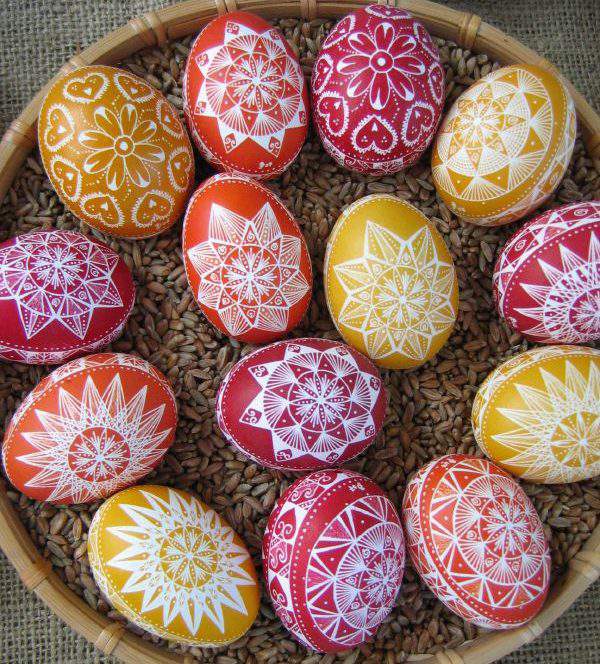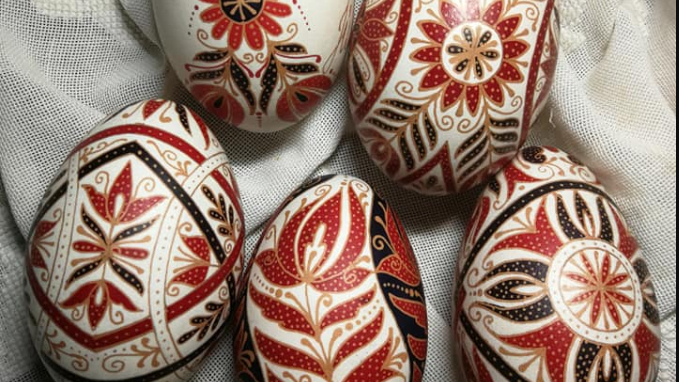Traditional Hungarian methods to decorate Easter eggs – PHOTOS, VIDEOS
Easter is celebrated in Christian communities all over the world, but many countries have their own set of traditions on how to celebrate it. In modern days, these traditions are slowly fading into oblivion and capitalistic products are taking over to satisfy demand. Today we are taking a look at traditional Hungarian methods to decorate easter eggs and a little history on the tradition itself.
Probably the most well-known Hungarian tradition around Easter time is “locsolkodás” or watering. During Easter, young girls are splashed with a bucket of water. This is a symbolical tradition and a fertility ritual of sorts.
The tradition in Hungary is so well-embedded and important for Hungarians that it has become a Hungarikum. You can read more about it HERE.
As for the Easter Eggs, there are a few concepts of where they might come from. Usually, women who get splashed will give different coloured eggs to young men who splashed them. In more modern traditions, the different colours could symbolise different things, red meaning love, green meaning friendship and yellow meaning something negative. However, originally there were only red eggs and it was believed that the blood of Jesus dropped on a basket of eggs is what had coloured them. No matter what the truth might be, the art of decorating Easter Eggs is something truly beautiful to behold.
Nowadays you can easily buy pre-painted eggs by the dozens and there are a lot of products you can use to colour eggs to any shade you want, but
the traditional Hungarian methods would include different plants that needed to be boiled to colour the eggs.
The longer you leave the egg in the colouring water, the more vivid the colour gets. According to Színesötletek, these are the plants to achieve the desired colour:
- Red – (dried) petals of common hollyhock (the black or the red variant), the boiled berries of rosehip usually create a nice pinkish colour.
- Brown – dried and browned husk of walnuts, also dried onion and red onion peels. The latter can also create a purplish colour.
- Yellow and Brown – the peels of onions can create reddish-brown hues and if you add alum, you can achieve bright yellows.
- Yellow – you can achieve yellow hues with calendula and saffron but also from buds and young twigs of apple trees.
- Green – you can use nettle, spinach and the green berries of European black elderberry to achieve hues of green.
- Purple – you can use grated beats, flowers of an aspen tree with alum and red cabbage.
After you have decided what colour you want, there are two traditional methods with which you can decorate the eggs. The first one is called “berzselés”. This is probably the easiest method. You gather different small leaves and plants and place them on the egg. You then need to put the whole thing in a piece of pantyhose. This will hold the leaves in place and when you are satisfied with the colour, you just take them out. The whole egg would be coloured except where the plant or leaf was. This is how it looks like:
The other, more crafty method is called “írás” literally meaning to write. You guessed it, you write on the egg, but with wax. People usually recommend beeswax, but even an old candle will do. You create the desired pattern with the heated, hence liquid wax and put it in cold, or no hotter than lukewarm dyeing water and colour the egg. The last step is to melt the wax off of the egg with a hairdryer for example and then you are left with a beautiful pattern where the markings were. You can play with several layers of paints or dyes if you fancy it, making really nice multi-coloured eggs.
The special pen used for this method is called “íróka” and there is a video on how you can create yours from scratch. You only need a twig, the end of a ballpoint pen (or any little tube or even shaped tin foil will do), and a little piece of twine or string. You can follow this video to make yours:
If you do not have inspiration, you can find over 200 traditional patterns HERE. There are also a few other techniques that need to be mentioned. Of course, you can just simply paint your egg with acrylic or oil paints and with a little finesse, you can create wonders. There is also a technique where you carve the eggshell and create ornaments like that. It is a very tedious thing to do and requires a lot of skill, but the effort is well worth it.

Read alsoThe most special Hungarian Easter egg
Source: Színesötletek.blog.hu, Daily News Hungary
please make a donation here
Hot news
What happened today in Hungary – 26 July, 2024
Drama: number of births in a 20-year low in Hungary
Yay or nay? – 6 odd Hungarian delicacies that make our skin crawl
Budapest tourism “exploded” this past weekend
Container transport in Budapest may stop: How will this affect Hungarian economy?
Minister: Hungary will protect its territory by every means possible











